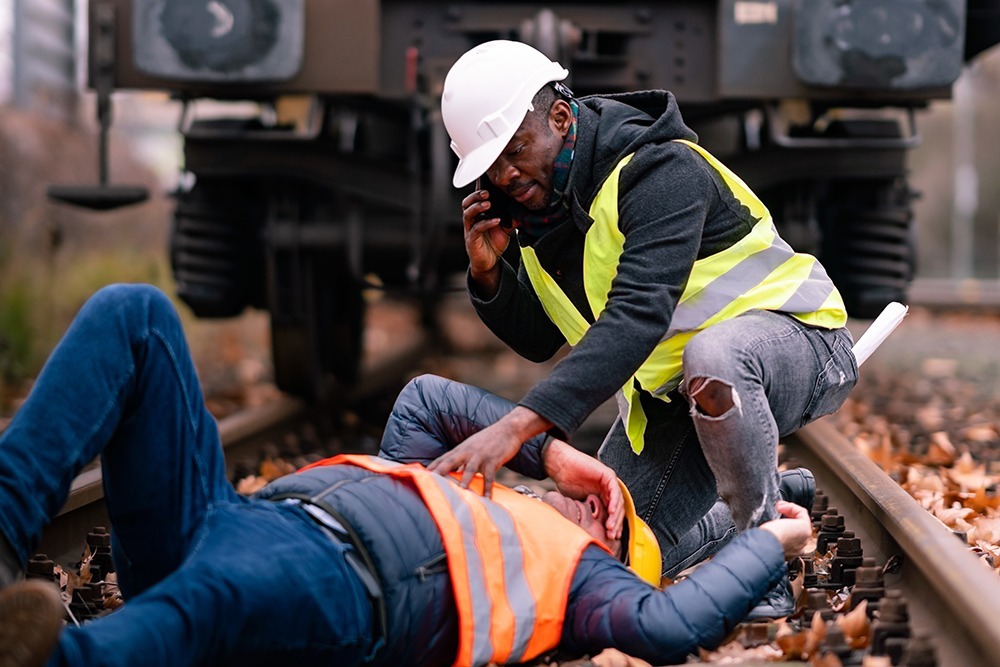Who’s Liable When Safety Protocols Are Broken on a Construction Site?
Share:
Construction sites are some of the most dangerous workplaces in America. With heavy machinery, elevated workspaces, high-voltage electrical systems, and volatile materials all operating at once, it’s no surprise that construction workers face serious risks every day. In fact, according to the U.S. Bureau of Labor Statistics, more than 1 in 5 worker fatalities in 2023 occurred in construction. But many of these tragic injuries and deaths were entirely preventable—had proper safety standards been followed.
In this blog post, we’ll break down the importance of safety standards in the construction industry, how noncompliance contributes to injuries, and what legal options workers have when accidents occur due to ignored regulations. Whether you’re a contractor, employee, or someone harmed on or near a job site, this guide is essential reading.
Why Construction Safety Standards Exist: A Necessary Lifeline
Safety standards are the blueprint for injury prevention on construction sites. These aren’t optional suggestions—they’re legally enforceable regulations created to protect workers and the public from harm. Federal agencies like the Occupational Safety and Health Administration (OSHA) have developed extensive guidelines governing everything from fall protection and scaffolding to trenching, electrical systems, and personal protective equipment (PPE).
But compliance isn’t just about ticking boxes. Proper adherence to safety regulations saves lives. For example, OSHA reports that simply implementing fall protection systems could prevent hundreds of deaths per year, as falls remain the leading cause of construction fatalities.
Common Construction Hazards—and How Standards Help Prevent Them
Let’s look at some of the most common construction hazards and the safety standards in place to mitigate them:
1. Falls from Heights: Falls account for over one-third of all construction-related deaths. Without these measures, even a single misstep can be fatal. Safety standards require:
- Guardrails or personal fall arrest systems for work at heights
- Proper ladder usage and secured scaffolding
- Training on safe climbing and equipment use
2. Struck-By Accidents: These occur when workers are hit by falling tools, swinging loads, or moving vehicles. Ignoring these protocols puts everyone on the job site at risk. Safety protocols include:
- Hard hat zones and PPE
- Barricades and warning signage
- Equipment operation training
3. Electrocutions: Live wires, faulty equipment, and improper lockout/tagout procedures contribute to many electrical injuries. OSHA standards help by mandating:
- Ground fault circuit interrupters (GFCIs)
- Insulation and tool maintenance
- Worker training for electrical safety
4. Caught-In/Between Accidents: Workers can become crushed by machinery, collapsed trenches, or moving components. When these systems fail—or are never put in place—lives are endangered. Federal standards require:
- Protective trenching systems
- Machinery guards
- Lockout/tagout controls
The Cost of Noncompliance: Injuries, Lawsuits, and Liability
Failing to follow safety standards doesn’t just result in citations—it causes real, life-changing harm. When a construction company, subcontractor, or property owner ignores required safety procedures, they may be held legally liable for any injuries that result. Examples of legal claims that can arise include:
Workers’ Compensation Claims: Injured workers are often entitled to benefits, regardless of fault.
Third-Party Lawsuits: If a subcontractor, equipment manufacturer, or another party caused the injury, you may be able to file a personal injury lawsuit.
OSHA Violations: Companies can be fined and penalized for failing to follow safety standards—even more so if those violations lead to injuries or death.
Real-World Example (Hypothetical): A roofer falls through an unguarded skylight while working on a commercial building. The general contractor failed to install required fall protection despite OSHA warnings. The worker suffers a spinal injury. Not only is a workers’ comp claim filed, but the contractor also faces a negligence lawsuit and thousands in OSHA penalties.
How Employers Should Keep Construction Sites Safe
Construction companies are legally and morally obligated to create safe working environments. That includes:
- Conducting routine safety audits
- Ensuring workers are trained in hazard recognition
- Maintaining equipment and tools
- Posting required safety signage
- Providing proper PPE
- Reporting and recording all incidents
When employers cut corners to save time or money, they may be gambling with their workers’ lives—and opening themselves to serious legal repercussions.
Injured on a Construction Site? Know Your Legal Rights
If you’ve been injured on a construction site, you may have more than just a workers’ comp claim. Depending on how the accident happened and who was at fault, you could be entitled to additional compensation for:
- Medical bills and rehabilitation
- Lost wages and loss of earning capacity
- Pain and suffering
- Permanent disfigurement
- Future medical or home care needs
A qualified construction injury attorney can help you determine what type of claim you’re eligible for and guide you through the process. It’s critical to act fast—there are strict time limits for filing both workers’ comp and third-party injury claims.
Final Thoughts: Safety Standards Are Non-Negotiable
Construction doesn’t have to be dangerous. With strict safety protocols, informed workers, and accountable leadership, many injuries and deaths could be prevented. But when companies fail in their duty to protect, the law offers a way forward for injured workers and their families.
At DuFault Law, we’ve seen firsthand how devastating a construction injury can be—not just physically, but financially and emotionally. We fight to hold negligent parties accountable and ensure our clients recover what they’re owed.
Injured on a Construction Site? Don’t Settle for Less Than You Deserve.
If you or a loved one was hurt due to unsafe conditions or ignored safety protocols on a construction site, you may be entitled to significant compensation. At DuFault Law, we know how to hold negligent employers, contractors, and site managers accountable. Our experienced legal team will fight for your medical expenses, lost wages, pain and suffering—and your future.
Call us now for a free, confidential consultation. Your recovery starts with one smart step. Don’t wait. The sooner we act, the stronger your case.
- Call us at (239) 422-6400
- Email us at contact@dufaultlaw.com
- Or Visit our Contact Page to schedule a consultation



Comments are closed